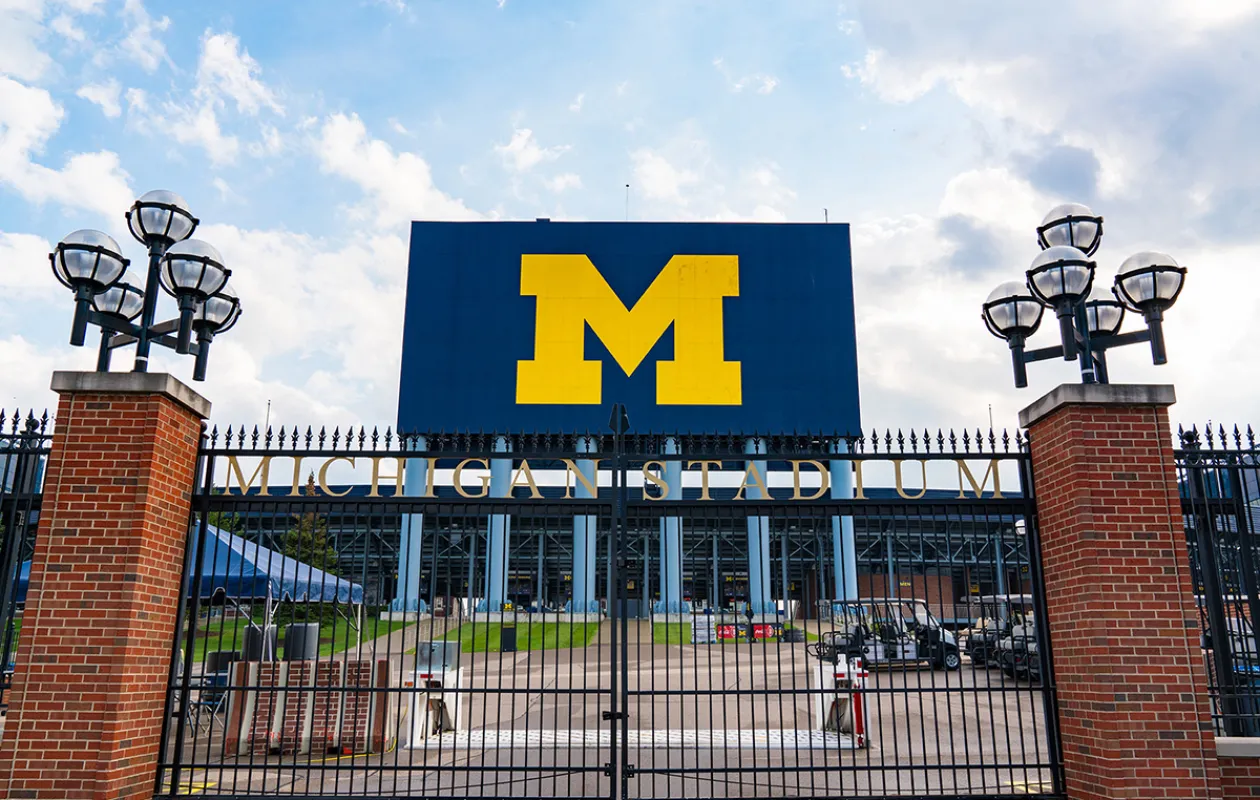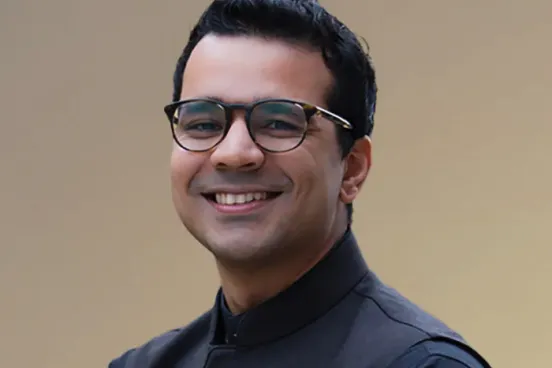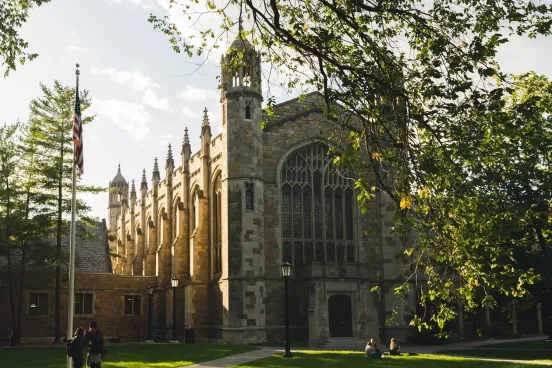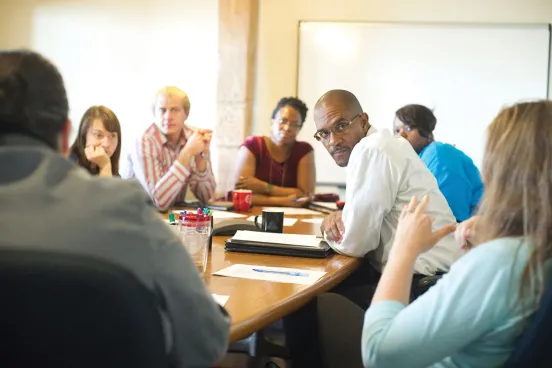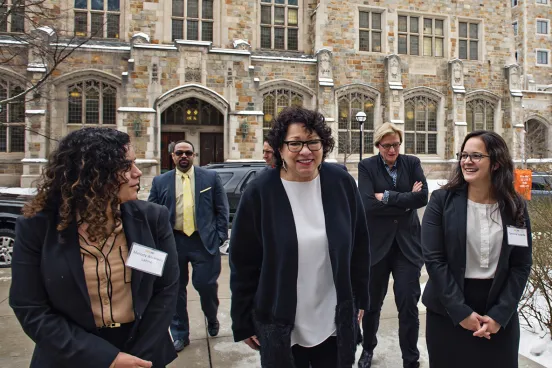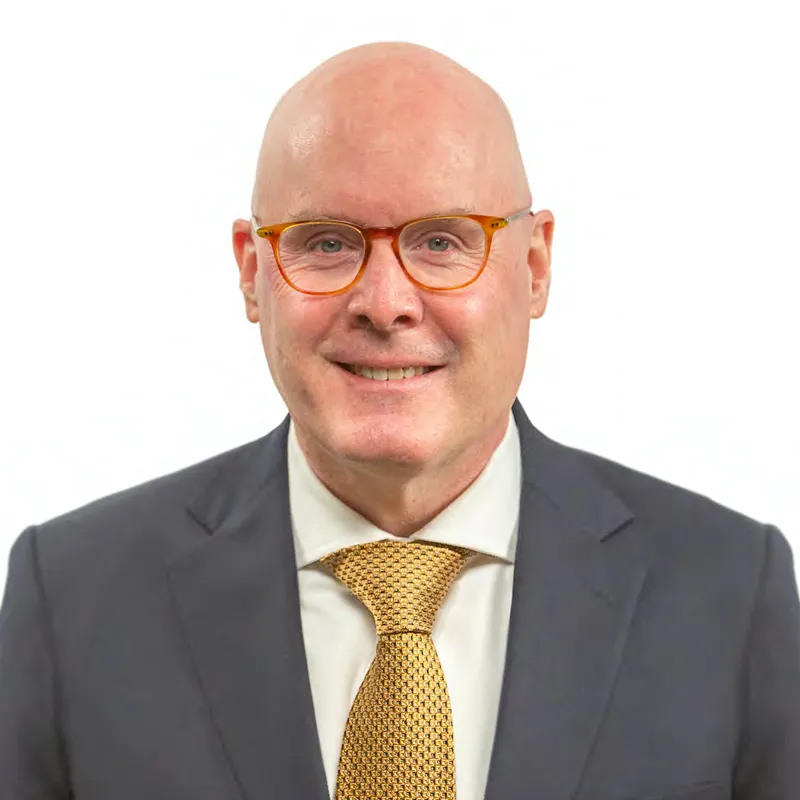
As the University of Michigan’s vice president and general counsel, Tim Lynch has seen it all in his nine-plus years on the job—well, except for admiralty law cases.
Lynch oversees more than 40 staff in the Office of General Counsel (OGC), 27 of whom are attorneys, including U-M alums Alethia Battles, MSW ’92, Jack Bernard, MA ’95, JD ’95, Rick Brandon, JD ’91, Ciara Comerford, AB ’92, JD ’95, Kelly Cruz, AB ’05, Gloria Hage, AB ’83, JD ’86, Tom Kent, AB ’91, Maya Kobersy, AB ’96, Debbie Kowich, AB ’84, JD ’89, Dave Masson, AB ’81, Colleen McClorey, AB ’83, Kara Morgenstern, MPH ’90, Katie Murphy, MSW ’01, JD ’08, Laura Napiewocki, AB ’86, MHSA ’88, Mark Nogueira, AB ’94, Sam Nuxoll, JD ’17, C. Ndu Ozor, BBA ’05, JD ’09, Patty Petrowski, JD ’99, Katie Schilling, AB ’09, JD ’12, and Denise Winiarski, AB ’92 (the rest are executive assistants, paralegals, and legal secretaries). His team also includes five or six 2L and 3L clerks from the Law School every term.
Tim LynchI daresay our office is the best all-purpose law firm in the state and the top legal office at any university or academic medical center in the country. And that's no doubt in significant part because so many members of the team earned their undergraduate, master’s, or law degree from the University.
Lynch, who is an adjunct professor at the Law School, managed to slow his pace for a moment to answer a few questions about the GC job at the University, both the day-to-day work as well as its challenges and rewards.
Due to the nature of the OGC, its work, and its size, would you compare it with a law firm?
Yes, and I daresay our office is the best all-purpose law firm in the state and the top legal office at any university or academic medical center in the country. And that’s no doubt in significant part because so many members of the team earned their undergraduate, master’s, or law degree from the University. My outstanding colleagues have a passion for the University and for public higher education, as well as a deep commitment to our clients.
What is your largest client?
Given the highly regulated nature of health care and the size of Michigan Medicine (with its roughly $5 billion annual budget), 19 members of the OGC team have the health system as their primary client.
How do you fit into the leadership structure at the University?
I advise the regents, president, and executive officers, first and foremost. I also serve on a cabinet with my fellow executive officers, who meet formally once a week with the president and with whom I typically engage multiple times a day.
The list of practice areas on the University’s website is pretty long. What are the main issues you spend your time on?
General counsel offices like ours at large universities practice all law. Other than admiralty (yet), I’m struggling to think of areas of law that haven’t come to our desks. That’s in part because we are such a large, complicated, world-class university, and that means our clients constantly generate interesting and challenging legal issues.
I tend to focus my time on particularly large-scale litigation, regulatory, and transactional matters—ones most likely to have significant, institution-wide impacts or risks. I am now spending a significant amount of time advising the University on how best to protect our health care providers, patients, and students in the post-Roe environment. And I recently had the pleasure of negotiating the contract with then President-elect Ono.
How does one office manage to balance expertise in these areas?
OGC attorneys are specialists with particular areas of expertise. The learning curve for many of the legal issues we face is steep, and the law can be so fluid that it makes more sense for attorneys to focus on discrete areas and clients. We also have outstanding paralegals who manage significant issue areas.
In what ways has the job changed over your tenure?
The work has grown even more intense each year. If I were billing at a law firm, my partners would be very happy. But I have the best client a lawyer could have, and when you love your work and client, time moves quickly.
What is the greatest challenge you’ve faced while at U-M?
During just one week in January, I had two extraordinarily sensitive matters on my plate. First, with the help of a great team, we concluded more than a year of mediation efforts in negotiating a $490 million settlement in the largest litigation matter in the University’s history to resolve allegations that a deceased team physician had sexually assaulted student-athletes and other patients over a period of decades. Second, I advised the University’s board on its decision to terminate the then-president for cause. That was the most demanding, intense period of time in my entire legal career.
Alternatively, what are your greatest rewards?
I get to work each and every day with super-smart, hard-working leaders and colleagues who love this University and who help the University to do its best to live up to its mission and highest aspirations. I get to talk about the issues of the day with brilliant friends on the faculty, who also give me great book and jazz CD recommendations. And my wife and I are proud parents of a son who graduated in 2020, a daughter who graduated in May, and a daughter who’s a rising sophomore. Through that experience, I have gotten yet another perspective on just what a special place this is.
What’s the most unusual issue you’ve had to deal with?
It’s hard to choose. I’d offer that, during a US Drug Enforcement Administration compliance review across the entire campus, we discovered a small peyote plant that was brought here by a professor in the 1930s. (I would like to emphasize that the plant was brought here for research purposes!) We are working closely with the DEA and a Native American tribe to return the plant to the tribe.
How excited are you to work with the University’s new president, Santa Ono?
I’m thrilled about the board’s decision to elect Dr. Ono as our 15th president, and I can’t wait to work for and with him.
Santa brings an extraordinary passion to his work and to public education. He clearly finds energy in building ties with students. And he can speak in profoundly important and personal ways on mental health issues. We know our students, including those at the Law School, face tremendous stresses that only have been exacerbated by COVID. I know he will be an advocate for our students as they confront these challenges of life.
Santa’s also got great joie de vivre and a sense of fun. (There’s video evidence.) And in meeting with him, I’ve already been so deeply impressed with his thoughtfulness, integrity, decency, and kindness.
I would also like to emphasize that all of us in the University community have been so lucky to have President Mary Sue Coleman return to serve as president a second time. She has provided the leadership we needed during these challenging periods, and it’s been wonderful to work with her again.
What’s your favorite non-OGC activity at the University?
May I offer three? First, the University Musical Society, on whose board I sit, presents a wonderful, diverse array of performances each year.
Second, I practice Goju Ryu karate pretty intensely and was proud to have earned my Shodan (first-degree black belt) in June. (Professor Len Niehoff is the true martial arts expert at the University of Michigan.)
Finally, I have the privilege of serving as an adjunct professor at the Law School, where I teach an Internal Investigations course during the winter term each year. I’m continually inspired by my students, who are willing to read hundreds of pages of reports each week and bring brilliant, fascinating, and refreshing perspectives. It’s a highlight of my year.


